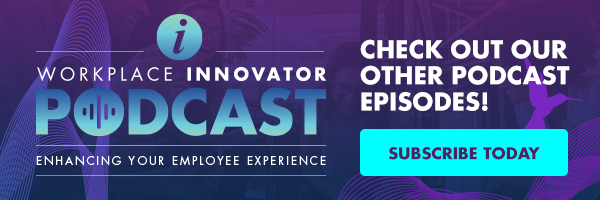Why Your Workforce Should Be The Main Point Of Focus During A Change


Many things seem to need your immediate attention during a workplace change. Teams are moving, buildings are getting torn down, or maybe leadership roles are being switching around. It’s often overwhelming for even an experience workplace manager. It can be easy to narrow your focus on handling all the tactical things going on. But who really deserves to have most of your attention during this time? Your workforce. I sat down with change-management experts Brian Collins and Andrea Sanchez to gather tips on how FMs can transition through a change with ease.
Change Management for Building a Connected, Sustainable and Accessible Modern Workplace
Brian Collins | Senior Manager of Change Management in Real Estate & Facilities at Microsoft
“I think we’re seeing the workplace as much more than an asset. We’re seeing corporate real estate as much more than a cost center. And I’m really excited that the C-suite is seeing the value that we can bring, not just to the bottom line but to the experience.”
Brian has also seen a dramatic shift in a facility leader’s responsibility. It used to be about maintaining the space, maintenance, the FM breath was fairly narrow. But now as we look into how buildings impact “the human experience” and their impact on people, we’ve seen more emphasis on the facility itself. And FMs have been thrown into examining the psychology and anthropology of their spaces, which is a lot of responsibility! However, being part of these new ways of work is exciting and should only motivate us to do our absolute best for the people it impacts.
“What’s In It For Me?” Addressing The People Side of Change
Andrea Sanchez | Executive Director for SparkStory, LLC.
“Change can be very hard, it’s not easy. It can take a lot of stress, some positive stress, but you want to make sure and rewards any type of brave behavior, because that’s the only way you’re going to make it through the change. You can’t assume it’s going to be smooth.”
Andrea Sanchez is one of the special people out there who gets excited about all the possibilities that come with change. That being said, she has consulted a few organizations through the process, and understands that it’s not always as easy as it seems from the outside. The biggest obstacle when it comes to change is the management of the people within it.
People tend to revert back to their biological tendencies when they feel threatened or displaced, which is often the case when changes happen out of their control, like at work. Most people experience some sort of negative emotion regarding change, while a few revert like Andrea, to a positive state of possibility and hope. However, everyone handles it in a different way, so you’re really dealing with twenty change management processes instead of just one. She’s found the key to helping the most people through a change is by “defining the why”.
Defining the why helps people make sense of the outcome of an upcoming project. It taps into their fight-or-flight response by giving them an end result, one that satisfies their initial reaction which is to question and revert against something new. You have to communicate “what’s in it for them” so they can focus on the benefits that are supposed to come out of the process. And by focusing on what people in your workforce stand to gain from these changes versus what they have to give up, you’re going to end up with a much happier group of people, who are possibly even supportive of what’s to come.
